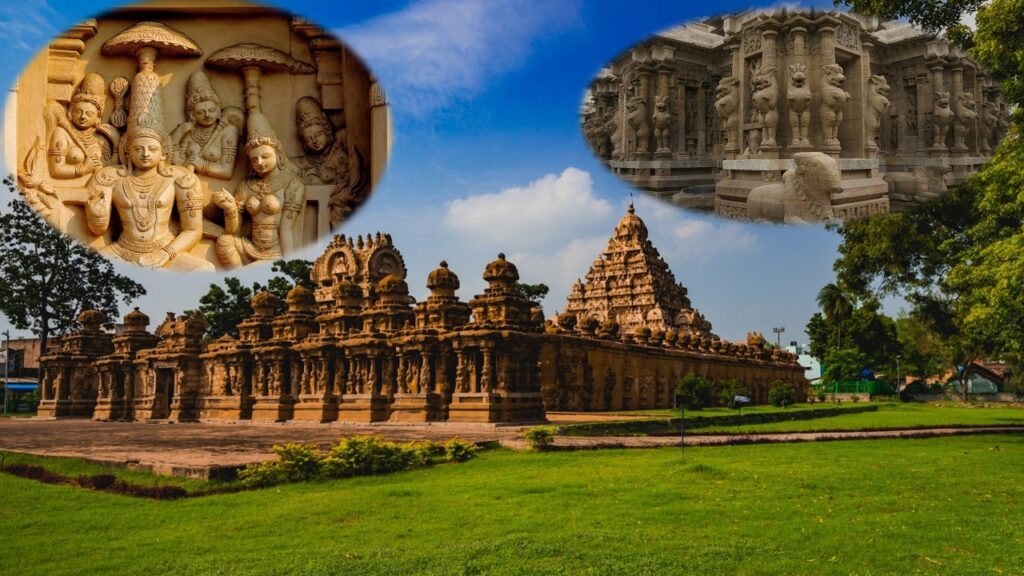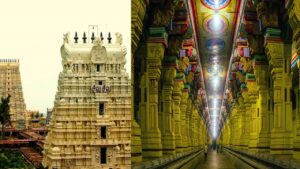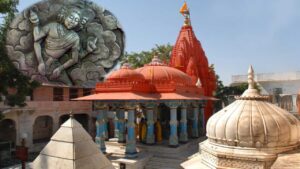kailasanathar temple

The Kailasanathar Temple, a magnificent structure nestled in the heart of India, stands as a testament to the country’s rich heritage and architectural prowess. Located in the enchanting city of Kanchipuram, Tamil Nadu, this ancient Hindu temple worships Lord Shiva as its primary deity. It is not merely a place of worship; it is a living encyclopedia of history, culture, and spirituality. As one of the most revered religious sites in India, the temple attracts thousands of pilgrims and tourists every year, offering them a glimpse into the grandeur of ancient Dravidian architecture.
Historical Background
The Kailasanathar Temple has a history that dates back over a thousand years. Constructed during the Pallava dynasty’s rule in the 8th century, the temple stands as a mesmerizing symbol of their artistic and architectural finesse. The Pallavas were known for their patronage of art and culture, and this temple served as a canvas for their creativity.
Architectural Marvels
Intricate Carvings
The temple’s outer walls are adorned with intricate carvings depicting scenes from Hindu mythology and the life of Lord Shiva. Every sculpture tells a story, and these artistic expressions leave visitors in awe of the craftsmen’s skill and dedication.
Monolithic Architecture
One of the most astonishing features of the Kailasanathar Temple is that it is carved entirely from a single rock. The temple’s main structure, along with its pillars and sculptures, were meticulously chiseled from a massive stone block, showcasing the brilliance of ancient engineering techniques.
Unique Dravidian Style
The temple is an exemplary representation of the Dravidian architectural style, characterized by its towering gopurams (ornate entrance towers), pillared halls, and pyramidal vimanas (towers above the sanctum sanctorum). The intricate details and symmetry of the temple are awe-inspiring.
Religious Significance
Lord Shiva as the Main Deity
At the heart of the Kailasanathar Temple lies the sanctum sanctorum, housing a sacred lingam representing Lord Shiva. Devotees flock to this revered site to seek blessings and spiritual solace from the divine.
Festivals and Celebrations
Throughout the year, the temple becomes a hub of vibrant festivities and religious celebrations. Maha Shivaratri, Annabhishekam, and Panguni Uthiram are some of the major festivals celebrated with great enthusiasm, drawing both locals and tourists to partake in the joyous occasions.
Mythological Legends
The Legend of Kailasanathar Temple
According to Hindu mythology, the Kailasanathar Temple’s location is closely associated with the legend of Mount Kailash, the abode of Lord Shiva. It is believed that the temple’s design and positioning mirror the mythical Mount Kailash, further adding to its spiritual significance.
Significance of the Temple’s Location
The temple’s strategic location on the banks of the Vegavathy River enhances its spiritual aura. The serene ambiance created by the river and lush surroundings adds to the peaceful atmosphere, making it an ideal place for meditation and introspection.
Preservation Efforts
Conservation Initiatives
To protect this invaluable heritage, various governmental and non-governmental organizations have taken up conservation initiatives. These efforts aim to preserve the temple’s structural integrity and its priceless artistic heritage for future generations.
UNESCO World Heritage Site
The Kailasanathar Temple’s historical and cultural significance has earned it the prestigious title of a UNESCO World Heritage Site. This recognition highlights its importance as a global cultural treasure.
Visiting the Kailasanathar Temple
Travel Tips
For travelers planning to visit the Kailasanathar Temple, it’s essential to be aware of the temple’s timings, dress code, and photography guidelines. Respectful behavior and adherence to the temple’s rules ensure a harmonious experience for all.
Must-See Highlights
Exploring the temple’s intricate carvings, majestic vimanas, and serene surroundings are some of the must-see highlights. A guided tour can offer valuable insights into the temple’s history and architectural nuances.
Impact on Tourism
Promoting Cultural Tourism
The Kailasanathar Temple plays a vital role in promoting cultural tourism in India. It attracts history enthusiasts, architecture aficionados, and spiritual seekers, contributing to the growth of the tourism industry.
Economic Benefits
The influx of tourists to the temple has a positive impact on the local economy. It creates job opportunities for guides, artisans, and vendors, stimulating economic growth in the region.
Inspiring Art and Culture
Influence on Indian Art
The temple’s unique architectural style and intricate carvings have left an indelible mark on Indian art and temple architecture. Many subsequent temples across India draw inspiration from the Kailasanathar Temple’s design.
Cultural Significance
As a symbol of India’s cultural heritage, the temple stands as a reminder of the country’s ancient roots, preserving and promoting its diverse cultural legacy.
Symbolism and Mysteries
Hidden Messages in the Carvings
The temple’s carvings are not only aesthetically mesmerizing but also carry hidden messages and teachings from ancient scriptures, offering a deeper spiritual experience to the discerning observer.
Astronomical Alignments
Some researchers believe that the temple’s architectural layout and sculptures align with astronomical events, possibly serving as an astronomical observatory in ancient times.
Spiritual Experience
Serenity and Peaceful Atmosphere
Visitors often describe feeling a sense of tranquility and spiritual energy within the temple premises. The serene ambiance fosters a conducive environment for introspection and meditation.
Rituals and Worship
Participating in the temple’s rituals and witnessing the elaborate ceremonies connect visitors to the rich traditions and spiritual practices of Hinduism.
Celebrating Diversity
Visitors from Across the Globe
The Kailasanathar Temple welcomes visitors from diverse cultural backgrounds and religious beliefs, fostering mutual respect and understanding among people from different walks of life.
Promoting Religious Harmony
As a symbol of religious tolerance and unity, the temple stands as a testament to India’s rich history of embracing diversity and coexistence.
The Legacy of Kailasanathar Temple
Influence on Temple Architecture
The Kailasanathar Temple’s architectural brilliance has significantly influenced the design of subsequent temples, leaving an enduring legacy in temple architecture across India.
Historical and Cultural Legacy
The temple’s historical significance and cultural legacy continue to inspire people to appreciate and preserve their heritage for future generations.
Future Prospects
Preservation Challenges
Despite conservation efforts, the temple faces various challenges due to natural wear and human impact. Continued efforts are necessary to ensure its preservation for generations to come.
Sustainable Tourism
Balancing tourism and preservation is crucial to maintaining the temple’s sanctity and minimizing its environmental impact. Emphasizing sustainable tourism practices can help achieve this delicate balance.
Conclusion
The Kailasanathar Temple is not merely a religious site; it is a living masterpiece that reflects India’s rich cultural heritage and architectural brilliance. As visitors step into its sacred grounds, they embark on a journey through time, unraveling the mysteries of an ancient civilization. The temple’s grandeur, combined with its spiritual ambiance, leaves a lasting impression on all who have the privilege of visiting this awe-inspiring monument.
FAQs
- Q: How old is the Kailasanathar Temple?
- A: The temple dates back to the 8th century, constructed during the Pallava dynasty’s reign.
- Q: What is the primary deity worshipped at the Kailasanathar Temple?
- A: Lord Shiva is the main deity worshipped at the temple, represented by a sacred lingam.
- Q: Is the Kailasanathar Temple open to visitors of all religions?
- A: Yes, the temple welcomes visitors from all religions and cultural backgrounds, promoting religious harmony.
- Q: Are there any specific festivals celebrated at the Kailasanathar Temple?
- A: Yes, the temple hosts several festivals, including Maha Shivaratri, Annabhishekam, and Panguni Uthiram.
- Q: Why is the Kailasanathar Temple considered an architectural marvel?
- A: The temple’s monolithic architecture, intricate carvings, and unique Dravidian style make it an architectural wonder.








